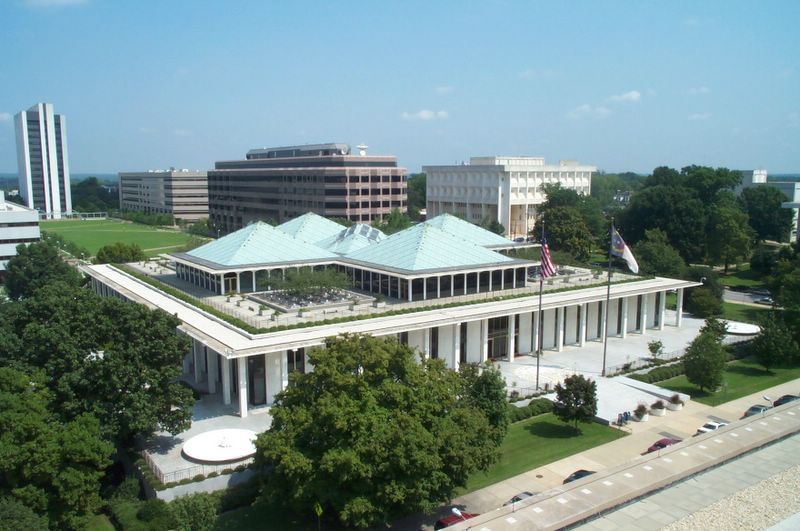With an eye toward the battles over redistricting that have roiled North Carolina politics for the last quarter-century, once again push is coming to shove.
This time, the advantage lies with voting rights and social justice advocates who have sought to keep the state’s African-Americans from being used as pawns amid a drive by conservative Republicans to cement their control.
A panel of three federal judges has declared that two of the state’s 13 congressional districts – the splatter-patterned, vaguely northeastern 1st and the snakelike 12th between Greensboro and Charlotte – amount to unconstitutional racial gerrymanders. In other words, they were drawn in such a fashion that the rights of black voters have taken a beating.
The judges in their Feb. 5 ruling directed the General Assembly to revise the boundaries of those districts by Feb. 19. And of course, any such redrawing means that the make-up of adjacent districts would be affected as well. It’s a tight timetable indeed, with North Carolina’s party primary elections set to be held on March 15.
Legislators who oversaw the now-invalidated redistricting scheme following the 2010 census have appealed, asking the judges to put their ruling on hold. What this all portends for the upcoming election schedule – which elections will be held as planned and which, if any, won’t – is a topic likely to keep the state’s politicians scurrying like ants in a knocked-over anthill. Voters will want to pay close attention to the unfolding story so they don’t miss out on opportunities to cast their ballots.
All along, Republican legislative chiefs – in particular, Sen. Bob Rucho of Matthews, the Senate redistricting chair, and his House counterpart, Rep. David Lewis of Dunn – have kept up the refrain that congressional and legislative districts devised under their guidance are “fair and legal.”
That’s been in response to complaints about districts so contorted in hopes of boosting Republican chances that the boundaries went beyond routine partisan gamesmanship to the manipulation of racial minorities due protection under the Constitution and federal law.
The state Supreme Court, considering a separate lawsuit, twice has found the redistricting plans acceptable. The latest such finding, in December, came even after the U.S. Supreme Court told the justices in Raleigh to take another look. Now, the Republicans’ defensive line has sustained its first breach. Can the line be repaired, or will it crumble?
Sorted by color
Instances of racial gerrymandering – a tactic that devalues and disadvantages certain citizens based on nothing more than their skin color – may be obvious on the basis of common sense, but they’re not simple to prove.
A huge body of jurisprudence, much of it flowing from North Carolina cases, has developed as the courts have tried to balance minority voters’ rights to be treated fairly with the prerogative of elected officials to draw districts as they see fit and to tilt the partisan scales.
In an ideal world, the boundaries of election districts would be neat and tidy, grouping communities that have common interests, making it easy for officeholders and constituents to connect, encouraging candidates to reach out to voters across ideological lines.
But in the real world of hardball politics, that sort of civics-class model proves to be a fantasy. Districts are shaped to help the party that does the shaping, to protect its incumbents and marginalize the opposition. They’re often stacked in such a way that a candidate running under a certain party’s banner is almost sure to win. Nowadays many candidates in such districts don’t even draw opponents. How’s that for democracy?
The task of voting rights advocates – besides working for redistricting reform in general – has been to tease out the racial motivations that can infect this partisan pushing and shoving.
That task is complicated by the long-term alignment of many African-American voters with policies and priorities championed by Democrats, such as progressive taxation, ample social programs, defense of civil rights, and support for public schools.
The upshot is that when Republicans have tried to improve their chances by drawing favorable district boundaries, they’ve been able to use ethnicity as a telltale marker of political leanings. As it happens, they ignore the fact that more than a few African-Americans these days – does Dr. Ben Carson ring a bell? – are conservative. But that pigeon-holing is where they’ve gotten into trouble.
Race-based strategy
The three judges who now have blown the whistle are Roger L. Gregory of the 4th U.S. Circuit Court of Appeals, Max O. Cogburn Jr. of the federal district court in Asheville, and William L. Osteen Jr., chief judge of the federal district court in Greensboro. Gregory, a Virginian who was appointed by President Clinton and then renominated by President Bush – and who happens to be the first African-American named to the Richmond-based 4th Circuit – wrote the main opinion.
The judges first had to decide whether, among all the factors that went into shaping the 1st and 12th districts, race had been the “predominate” one. If it was, then they had to ascertain whether the legislature had a good reason in line with the public interest for relying on race so heavily. That’s the necessary process for determining whether racial classifications pass muster under the Equal Protection Clause of the 14th Amendment.
The 1st District seat has been held by Democratic African-Americans since Eva Clayton of Littleton was elected in 1992. Rep. G.K. Butterfield of Wilson has been the incumbent since 2004. The 12th District, created in 1992 when the 1990 census entitled the state to another seat in the U.S. House, was represented by African-American Mel Watt of Charlotte from 1993 to 2014, when he resigned to become head of the Federal Housing Finance Agency. Former state Rep. Alma Adams of Greensboro, also an African-American Democrat, won a special election last November to claim the post.
So-called minority-majority districts such as these two were sanctioned under the Voting Rights Act so that African-American voters would have a fair chance to elect their preferred candidates. But Judge Gregory noted in his opinion that for most of their existence, the black voting-age population in each district was less than half the total. Still, African-American candidates were elected – signaling that white voters were open to cross-racial voting and that officeholders were being chosen on the basis of a range of qualities, just as they should be.
Voters shuffled
When Republicans took control of the General Assembly in the 2010 elections, they gained the authority to redraw congressional and legislative districts in line with population swings recorded in the decennial census.
Their strategy was to move Democratic-leaning voters into a handful of districts that already favored Democrats, thereby making the adjacent districts more congenial for Republicans.
While the ebb and flow of politics has to be taken into account, it’s clear that the strategy has worked. From a period when the state’s congressional delegation had a Democratic tinge – eight Democrats and five Republicans served from 2009 to 2011 – the delegation has flipped to today’s lopsided 10-3 Republican edge.
What the strategy meant in practice was that the 1st and 12th Districts, already with sizable black populations, were given even more African-American voters. Gregory spelled out how, in a trial last October before the panel of judges, it was shown that legislative chiefs had required each district to include an African-American majority.
“There is strong evidence that race was the only nonnegotiable criterion and that traditional redistricting principles were subordinated to race,” the judge wrote. “In fact, the overwhelming evidence in this case shows that a [black-voting-age-population] floor, or a racial quota, was established” in both districts. “And, that floor could not be compromised.”
He continued: “A congressional district necessarily is crafted because of race when a racial quota is the single filter through which all line-drawing decisions are made, and traditional redistricting principles are considered, if at all, solely insofar as they did not interfere with this quota.” That’s what had happened here, he concluded. And African-American voters saw their ability to influence elections and policy choices diminished.
No balkanizing
Republican legislators have said they had no choice but to draw the districts as they did, in order to shield themselves from claims under the Voting Rights Act that black voters lacked a fair chance to elect their preferred candidates.
Gregory, though, dismissed that argument: “The suggestion that the VRA would somehow require racial balkanization where, as here, citizens have not voted as racial blocs, where crossover voting has naturally occurred, and where a majority-minority district is created in blatant disregard for fundamental redistricting principles is absurd and stands the VRA on its head.”
Judges Cogburn and Osteen joined Gregory’s opinion with respect to the 1st District. Osteen agreed that race had been considered in the redrawing of the 12th District but not that it had been the predominate factor; he said the district should be allowed to stand.
Writing separately, Cogburn addressed the ill effects of gerrymandering in general. “As redistricting through political gerrymander rather than reliance on natural boundaries has become the tool of choice for state legislatures in drawing congressional boundaries, the fundamental principle of the voters choosing their representative has nearly vanished,” Cogburn said. “Instead, representatives choose their voters.… Elections should be decided through a contest of issues, not skillful mapmaking.”
Republican legislators have used today’s sophisticated mapping software to claim the inside track in many state House and Senate races as well as in congressional contests. It’s not hard to imagine the ruling from Judge Gregory and his colleagues becoming a template as the courts sort out challenges to those state-level redistricting plans.
The entire redistricting debate takes place in the context of other Republican efforts to tilt the electorate in their favor via changes in election rules. Although challenges still are pending, those efforts as well have drawn skeptical notice from federal judges – a welcome sign. Legislators weakened a strict voter ID rule when it became apparent the rule likely would be overturned in court.
The Council of Churches stands with those working to keep our state’s elections accessible to all citizens and to avert redistricting schemes that unfairly dilute the voices of any voters – especially people of color for whom the right to cast a meaningful ballot still cannot be taken for granted.


